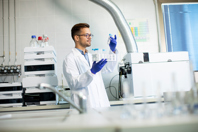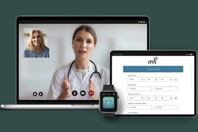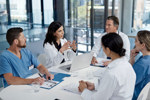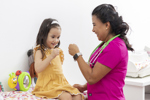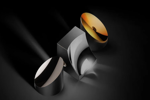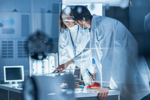Product Safety/Pharmacovigilance
PRODUCTS
-
Make strides with a tailored, comprehensive suite of discovery and development services to rapidly progress your project and reduce time to market.
-
Nanomilling revolutionizes drug delivery by reducing particle size to enhance solubility, bioavailability, and therapeutic efficacy, addressing the challenges of poorly water-soluble APIs.
-
Delve into the details of this full-service global product development and strategic regulatory group that has a proven track record of successful FDA meetings and approvals.
-
Our research is powered by MRN owned, regulatory-approved and validated eClinical software systems. Our technology can be used at-site and at-home enabling fully integrated data through any clinical trial.
-
XT-Thrive® is a DMSO-free, serum-free, protein-free, and chemically defined cryopreservation media for the preservation of mammalian cells at ultra-low temperatures (-70° C to -196° C). Designed and manufactured with the utmost quality in mind, XT-Thrive® is tailored to provide high cell recovery and functionality. It is a non-toxic & hyper-effective alternative to traditional cryopreservatives and is plug and play for cell & tissue manufacturing processes.
WHITE PAPERS AND CASE STUDIES
-
Compliance Auditing: Diving Into Common Critical Findings
Review critical findings in compliance audits, highlighting frequent issues, their impact on operations, and steps companies can take to improve regulatory compliance.
-
Injection Site Reaction Screening Methodology
Optimize drug formulations for solubility at physiological pH to reduce injection site reactions, enable high-concentration dosing, and enhance patient comfort and compliance.
-
RWD's Significance In The Largest FDA-Funded IOL Study Of Pediatric Patients
With FDA grant support, the American Academy of Ophthalmology and Verana Health conducted the largest real-world study to date on intraocular lens (IOL) use in pediatric cataract patients.
-
Improving Pre-Clinical Study Efficiency With mRNA-LNP Technology
Uncover how Repair Biotechnologies, in collaboration with Vernal Biosciences, helped to pave the way for the next generation of breakthrough treatments for cholesterol and aging-related diseases.
-
Navigating The FDA's Drug Supply Chain Security Act
Explore the transformative impact of the DSCSA on the pharmaceutical industry, which ensures stringent standards, prevents counterfeit drugs, and enhances traceability for both large corporations and small manufacturers.
-
Optimize Startup And Payment Processes
Delve deep into the collaborative journey where global CRO Linical was able to revolutionize its financial lifecycle of clinical trials—from initial budgeting to seamless site payments.
-
RTSM: Randomization And Cohort Management, IP Inventory Management
Signant’s SmartSignals® RTSM solution helped an innovative biopharmaceutical company secure an FDA Orphan Drug designation for its cardiomyopathy drug.
-
Using IR Spectroscopy For Counterfeit Drug Detection
Spectroscopy technology using diamond-turned mirrors, beamsplitters, and other optical components is especially helpful for the detection of harmful chemical compounds that may be found in counterfeit opioids and other pharmaceutical drugs.
-
The Benefits Of End-To-End Formulation And Fill/Finish Of Biologics
Proper formulation development has a huge impact on whether a technology transfer to clinical phase fill/finish is successful. Review the challenges of transitioning a promising drug candidate.
-
Accelerate Development Of Enabled Formulations For Poorly Soluble Drugs
Explore how a platform integrating drug substance, drug product, and clinical testing within a single organization accelerates development and reduces costs, helping deliver positive outcomes earlier.
-
Match Your Development And Manufacturing Path To Your IND Milestones
The drug development journey is long, expensive, resource-straining, and risky. Discover how to maximize the value of early-phase material and match your development path to your IND milestones.
-
Navigating The Evolving Landscape Of Immunotherapy in Oncology
Immunotherapy is revolutionizing oncology, enhancing patient outcomes through targeted treatments. This evolving landscape includes checkpoint inhibitors, and personalized medicine, shaping the future of cancer care.
NEWS
-
60 Degrees Pharmaceuticals Receives FDA Orphan Drug Designation For Tafenoquine For Treatment Of Patients With Acute Babesiosis6/11/2024
60 Degrees Pharmaceuticals, Inc. (NASDAQ: SXTP; SXTPW) (the “Company” or “60 Degrees Pharmaceuticals”), a pharmaceutical company focused on developing new medicines for infectious diseases, announced today that the U.S. Food and Drug Administration (“FDA”) has granted its investigational tafenoquine candidate orphan drug designation for the treatment of patients with acute babesiosis.
-
Teva And Samsung Bioepis Announce Biosimilar EPYSQLI® (eculizumab-aagh) Injection Now Available In The United States4/8/2025
Teva Pharmaceuticals, a U.S. affiliate of Teva Pharmaceutical Industries Ltd. (NYSE and TASE: TEVA), and Samsung Bioepis Co., Ltd. today announced the availability of EPYSQLI® (eculizumab-aagh) in the U.S. EPYSQLI is a biosimilar to Soliris® (eculizumab) for the treatment of paroxysmal nocturnal hemoglobinuria (PNH), atypical hemolytic uremic syndrome (aHUS) and generalized myasthenia gravis (gMG) in adult patients who are anti-acetylcholine receptor (AchR) antibody positive.
-
PepGen Receives U.S. FDA Fast Track Designation For PGN-EDODM1 For The Treatment Of Myotonic Dystrophy Type 12/20/2024
PepGen Inc. (Nasdaq: PEPG), a clinical-stage biotechnology company advancing the next generation of oligonucleotide therapies with the goal of transforming the treatment of severe neuromuscular and neurological diseases, today announced that the U.S. Food and Drug Administration (FDA) has granted Fast Track designation to PGN-EDODM1, an investigational candidate for the treatment of myotonic dystrophy type 1 (DM1).
-
FDA Approves Samsung Bioepis' EPYSQLI® (eculizumab-aagh) As A Biosimilar To Soliris (eculizumab)7/22/2024
Samsung Bioepis Co., Ltd. announced today that the U.S. Food and Drug Administration (FDA) has approved the Biologics License Application (BLA) for EPYSQLI® (eculizumab-aagh) as a biosimilar to Soliris1 (eculizumab).
-
Tonix Pharmaceuticals Announces Selection Of Two Contract Manufacturing Organizations For The Launch And Commercial Manufacture Of Tonmya™ For The Management Of Fibromyalgia3/20/2024
Tonix Pharmaceuticals Holding Corp. (Nasdaq: TNXP) (Tonix or the Company), a biopharmaceutical company with marketed products and a pipeline of development candidates, today announced it has selected two contract manufacturing organizations (CMOs), one of which is Almac Pharma Services, a member of the privately owned Almac Group, as dual supply sources for the potential launch and commercialization of Tonmya™ (also known as TNX-102 SL, cyclobenzaprine HCl sublingual tablets) in the U.S.
ABOUT
Pharmacovigilance/Drug Safety
Pharmacovigilance is also referred to as drug safety. Drug safety is the pharmacological science around the collection, detection, assessment, monitoring, and prevention of adverse effects with pharmaceutical substances.
The primary focus of pharmacovigilance is adverse drug reactions. Adverse drug reactions include any response to a drug that is harmful, poisonous or unintended. Unintended consequences can include lack of effectiveness at a therapeutic dosage, overdoses, abuse or misuse of the drug.
Adverse event reporting is the activity most closely associated with pharmacovigilance. Adverse event reporting consumes a significant amount of time. It involves the notification, prioritization, data entry, hazard assessment, distribution, reporting and archiving of the adverse event and all related data and documentation.
In order to improve the outcomes of clinical trials safety and risk management receive greater amounts of resources and money. The pharmacovigilance function is an integral part of creating safety oversight throughout all phases of a clinical trial. This function requires great efficiency, and a seamless, integrated framework to ensure rapid, early detection and reporting of adverse events, assessment and follow-up.
Clinical trials, with a strong pharmacovigilance process, result in lower surveillance costs during the product development cycle, and enhance patient safety by communicating potential safety issues quickly. With tight drug safety vigilance in place, problems are identified and addressed quickly; reducing the time it takes to get a product into the marketplace.
The ultimate job of pharmacovigilance is the identification of hazards associated with pharmaceutical products and finding ways to minimize risks or harm to patients.

